Anchor sizes
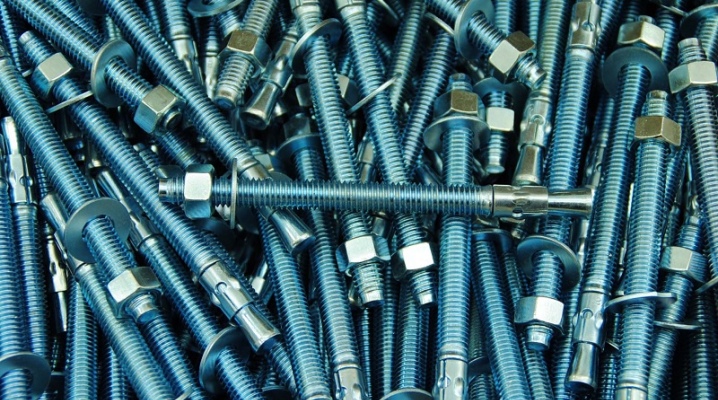
Anchor, also known as an anchor bolt, is one of the newest and most technologically advanced fastening hardware. The rapid evolution of the anchor (for connoisseurs of foreign languages it is clear that "anchor" is an "anchor") consumable has led to the emergence of many varieties of its design, used materials, sizes. It is about the size groups of anchors that will be discussed in this article.
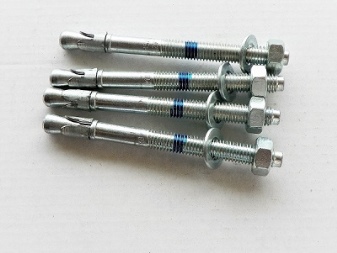

main parameters
It is quite logical to assume that the dimensions of the anchors are, first of all, their length and diameter. They define the scope of the fastener. The choice of the drill that will be needed for the job depends on this. Anchor bolts are a rather complex type of fastener, which affects their cost, this is another argument in favor of their careful selection. In addition, it is important to take into account that it is almost impossible to dismantle such fasteners of any size without destroying the base.
And, of course, it is important to pay attention to the diameter of the threaded rod, which affects the quality of the fastener. During the operation of the anchor fasteners, a standard set of components for its production was developed, which meets the basic requirements for hardware that perform fastening functions.

Diameter
The anchor diameter refers to the diameter of the spacer sleeve, which determines the diameter of the required drill. The fracture strength of the connection depends on this indicator - a very important indicator when installing any objects, for example, on a wall.
The diameter will determine the fastening capabilities under variable loads and vibrations, for example, when installing window or door blocks, as well as sports equipment.
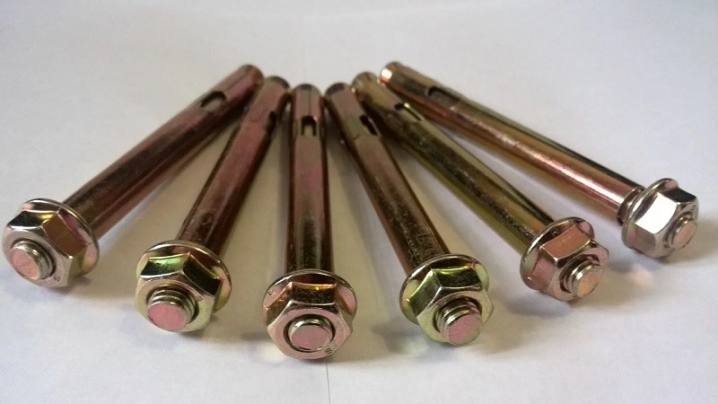
Length
However, even a very solid in thickness, but a short anchor can be pulled out along with a part of the enclosing material with increasing loads if its length is not sufficient. Typically, thicker fasteners are longer. Besides, a longer anchor is able to hold a thicker object, which is very important to consider when installing supporting structures, finishing materials or equipment.
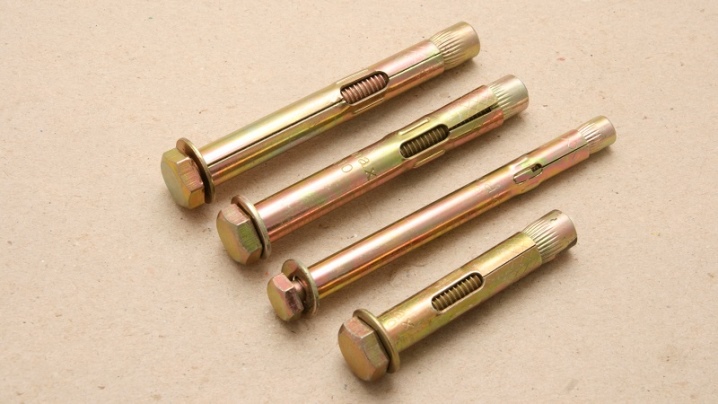
What are the sizes?
The dimensions of the anchor bolts are subject to standardization according to their production specifications. All anchor fastening hardware can be combined into size groups based on diameter, for example, an anchor for 8 has a sleeve diameter of 8 mm, and for 10, respectively, 10 mm. It is not difficult to determine the diameter of the anchor at 12.
The length can be from 18 to 100, 200 and more millimeters. The anchor with the formula 10x300 mm is a fastener with a sleeve diameter of 10 mm and a working surface length of 300 mm. The thread of the spacer pin is standardized with the sizes of ordinary bolts: M6, M8, M10, M12, M16, M20, etc. The sizes of a stud, like a simple bolt, can also be different: M8x100, M10x100, M16x200, etc.
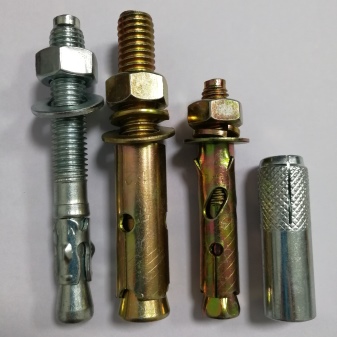
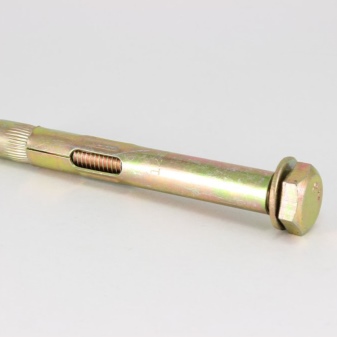
Standard sizes of anchor bolts are illustrated in the table.
Diameter (mm) | Length (mm) | Thread |
6,5 | 18, 25, 36, 56, 75 | M5 |
8 | 25, 40, 60, 80, 100, 120 | M6 |
10 | 40, 50, 60, 80, 100, 120, 125, 130, 150, 300 | М8 |
12 | 60, 75, 100, 130, 150, 180, 200 | M10 |
16 | 65, 110, 150, 180, 220, 300, 360 | M12 |
20 | 75, 105, 150, 200, 250, 300, 360 | М16 |
24 | 300, 360 | M20 |
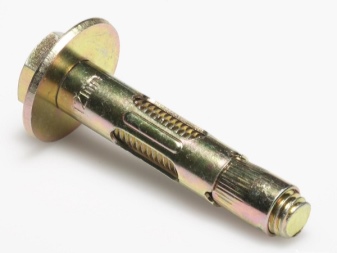
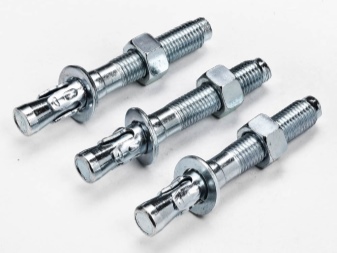
When choosing anchors, you should correlate their length and diameter, since you will have to add the thickness of the attached material or object. The maximum material thickness that can be anchored is shown in the table. Increasing the thickness more than the recommended one can lead to the loss of fasteners or, more often, to the destruction of the enclosing material.
Standard size | Maximum thickness of retained material (mm) |
6.5x18 | 3 |
6.5x25 | 5 |
6.5x40 | 8 |
6.5x56 | 28 |
6.5x75 | 47 |
8x25 | 3 |
8x40 | 12 |
8x60 | 32 |
8x80 | 50 |
8x100 | 70 |
8x120 | 90 |
10x40 | 5 |
10x50 | 12 |
10x60 | 15 |
10x80 | 40 |
10x100 | 60 |
10x120 | 70 |
10x125 | 80 |
10x130 | 90 |
10x150 | 110 |
10x200 | 130 |
12x60 | 15 |
12x75 | 25 |
12x100 | 50 |
12x130 | 80 |
12x150 | 100 |
12x180 | 130 |
12x200 | 150 |
16x65 | 20 |
16x110 | 65 |
16x150 | 100 |
16x180 | 135 |
16x220 | 175 |
16x300 | 240 |
16x360 | 300 |
20x75 | 25 |
20x105 | 55 |
20x150 | 100 |
20x200 | 150 |
20x250 | 200 |
20x300 | 250 |
20x360 | 300 |
24x300 | 220 |
24x360 | 280 |

The trading network may receive hardware with slightly different dimensional characteristics. It is very rare, but you can still find fasteners with non-standard dimensions: 6x25.6x30, 6x40, 6x60 mm. Even less common is anchoring with a small thread diameter: for example, M3. Such hardware has a very tough competition with plastic dowels and self-tapping screws, which are usually cheaper. More often, such small anchors have a very difficult folding spacer mechanism, respectively, their own special niche of application.
They allow installation in relatively thin partitions, where no other fasteners can be used.

How is it indicated in the labeling?
In order to avoid constant measurement of anchors during selection or work, markings are applied to their sleeve using a stamp, allowing you to quickly orient yourself. Here is an example of marking a domestic anchor: М12 16x150. In this case, M12 is the thread size, 16 is the diameter of the sleeve and drill that needs to be drilled, 150 is the maximum depth to which the material must be drilled, corresponding to the length of the hardware. The markings may differ slightly from manufacturer to manufacturer. In addition to the above information, the marking can also indicate the maximum thickness of the material to be fixed.
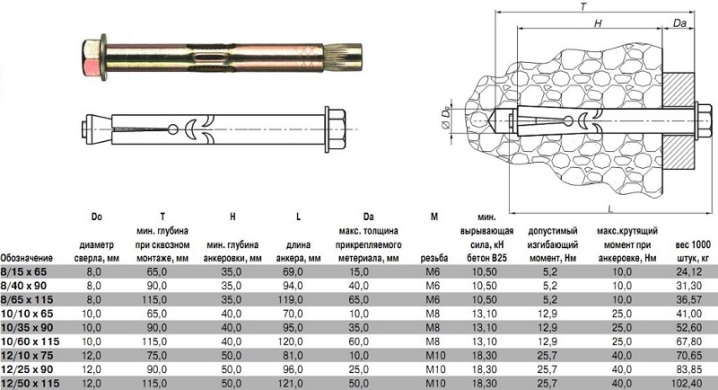
How to choose?
In order to choose the right anchors, you need to clearly understand in what material they will have to be fastened, this will help determine the minimum possible drilling depth. It is important to remember that in looser material, longer anchors should be attached. It is also necessary, at least in general terms, to represent the load that the fasteners will have to resist, this will allow not to be mistaken with the selection of the diameter of the hardware.
The savings in selecting fasteners as specific as the anchor bolt can be very expensive. The short bolt can be pulled out along with some of the wall material. Incorrect determination of the diameter can lead to deformation and loosening of the fastener under strong dynamic loads.
On the other hand, an increase in the parameters of a product entails a significant increase in its cost.
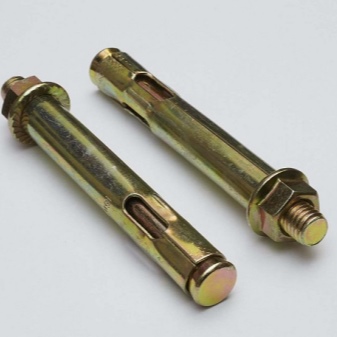
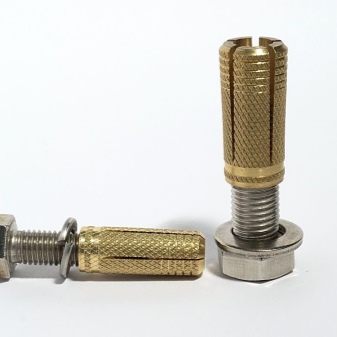
In the next video, you will find the rules for choosing a dowel and anchor.













The comment was sent successfully.